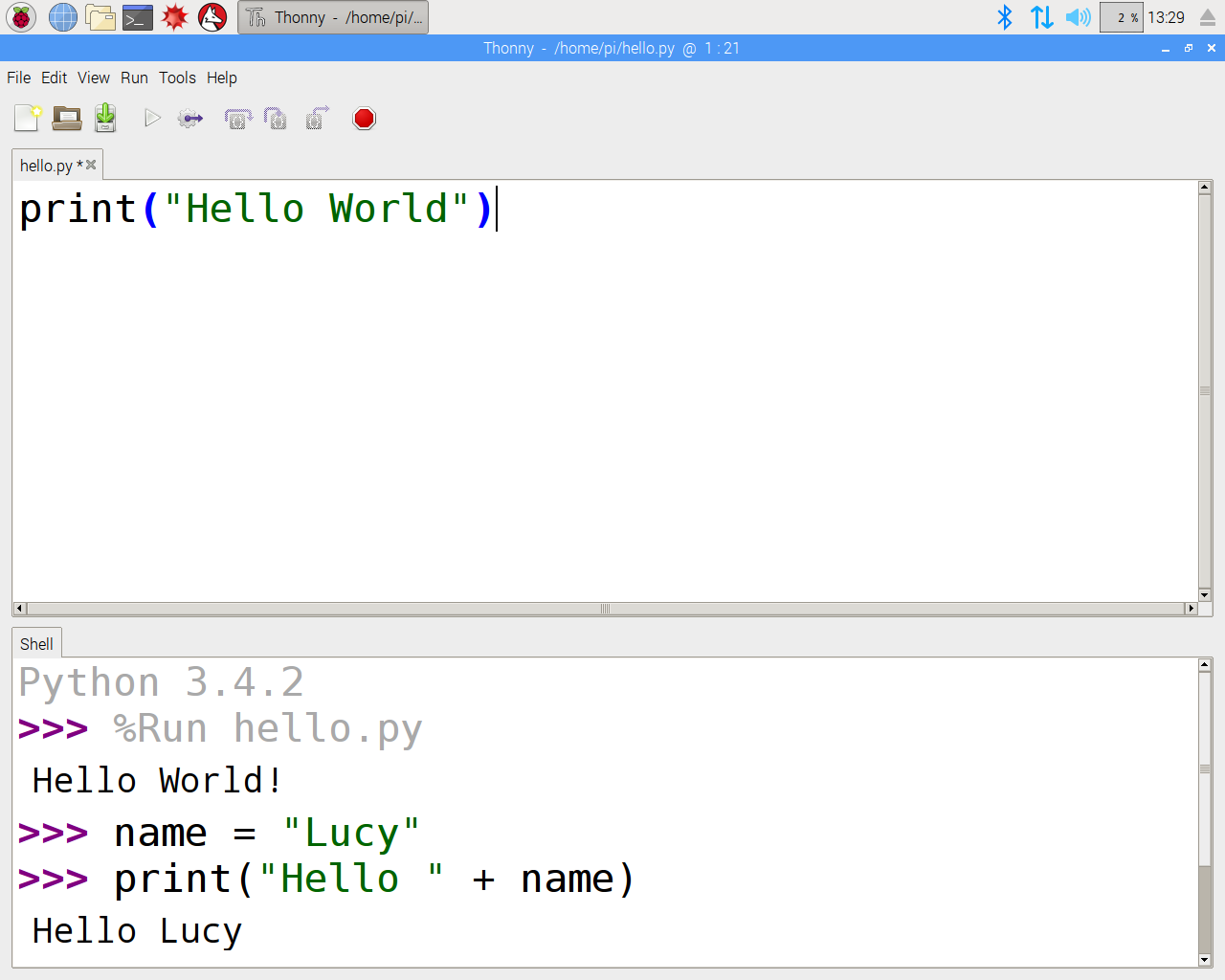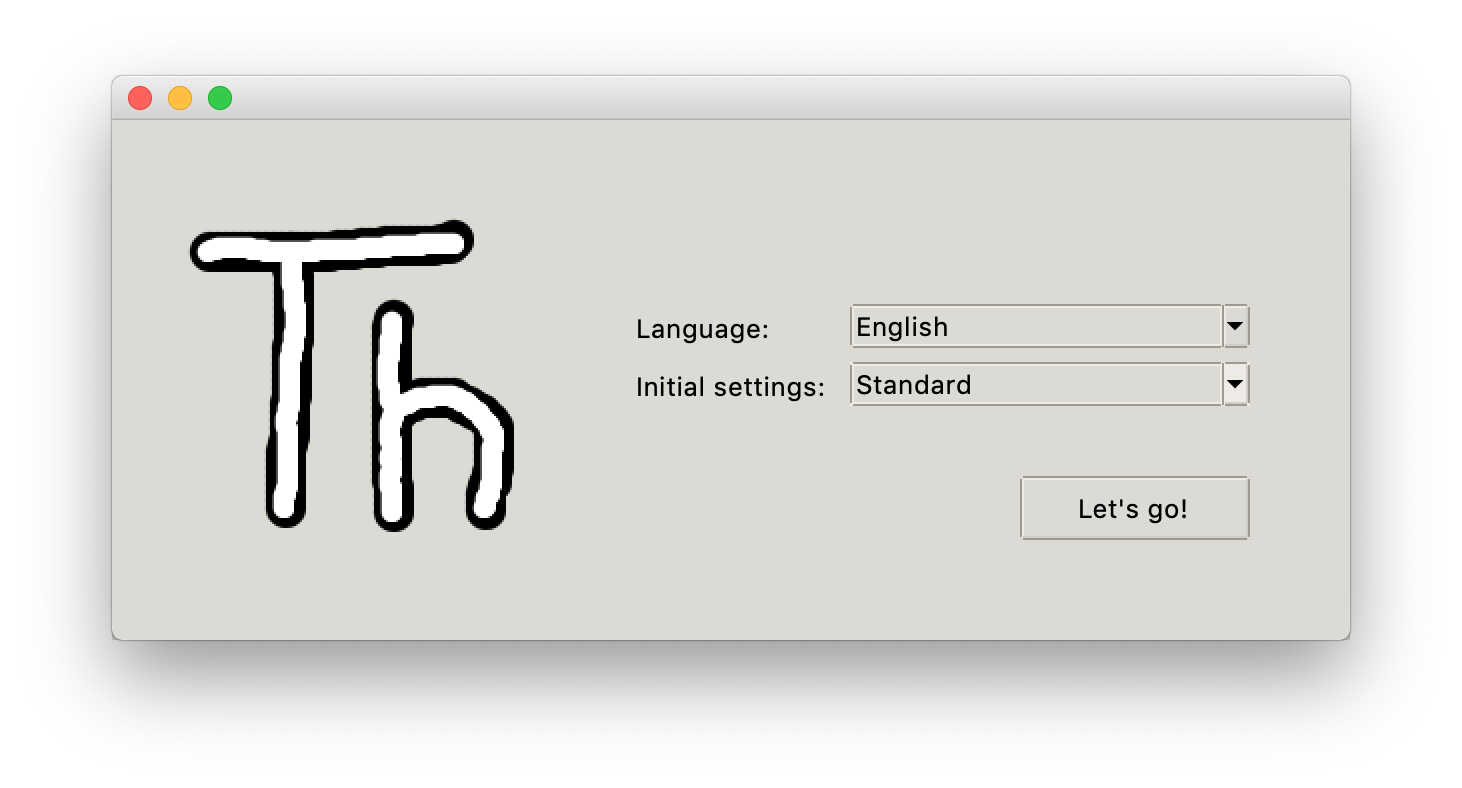

- #Install thonny on raspberry pi how to
- #Install thonny on raspberry pi full
- #Install thonny on raspberry pi code
#Install thonny on raspberry pi how to
Watch this video as an additional resource to this article:Īfter watching the video, subscribe to the Robotics Back-End Youtube channel so you don’t miss the next tutorials! How to start Thonny IDE on Raspberry Pi OSįirst, obviously, you need to install Raspberry Pi OS on a microSD card, for your Raspberry Pi board. Thonny IDE is already here ready to be used. Also, when you begin with programming, using an IDE is great because you don’t have to think about all the configuration, you can just start and learn step by step directly by programming.Īnd the icing on the cake: after you install Raspberry Pi OS, there is no extra step to do. The Thonny IDE will then allow you to be more productive when you write Python programs. So you can focus on writing code, which is the most important thing you can do. And many more things, but we’ll stick to that for now.Īn IDE will contain all those features in just one software.Debug your programs so you can see what’s happening during the execution.Save your programs, open them, edit them.Python doesn’t need one since it’s an interpreted language: each instruction is executed at runtime, one by one.
#Install thonny on raspberry pi code
#Install thonny on raspberry pi full
However, most IDEs require a graphical interface to use, which means you will need to be on the full desktop version of Raspbian. IDEs offer a number of benefits including syntax highlighting, code completion, one-click running, debugging hints, etc. Some users prefer to use an integrated development environment (IDE) when developing code. You are welcome to continue working through this guide using a text editor and command line. nano, vim, emacs, Midnight Commander, Leafpad, etc.), save it, and then run it from the terminal with the command python. The simplest way to create Python programs is to write your code in a text editor (e.g. py suffix is also necessary when making modules, which we'll cover later. py, you will know that it contains Python code. However, it can be very helpful to keep your files organized so that when you see a file ending in. py is not required for the interpreter to run the code found inside. py, the Python interpreter will run the commands found in the file without giving you an interactive session. To summarize what we just did, you can use the python command on its own to begin an interactive interpreter session that allows you to type commands in real time. Note: In case you were wondering, I am clearing my terminal between screenshots with the clear command. Once you press enter, you should see the phrase Hello, World! repeated back to you. Type the following command: language:bash You should be presented with a different command prompt, consisting of 3 greater-than signs >. Getting Started with the Interpreterįrom a terminal, enter the following commend to start the Python interpreter: language:bash If you are curious about where the phrase "Hello, World!" comes from, this Wikipedia article gives a brief yet fascinating history.

This will show you two of the main ways to interact with Python. We'll do this first from the interpreter and then we'll create a file and run it as a program. To start, we'll tell Python to print the phrase, "Hello, World!" to the terminal. This will allow us to test out commands one line at a time! In fact, we can even run the interpreter in what's known as interactive mode.


translate our program into machine code) in order to run our program. This means that we don't need to run a separate compile step (i.e. One of the coolest features of Python is that it is an interpreted language (OK, in reality, Python scripts are first compiled to some bytecode, and that bytecode is interpreted). Share on Twitter Share on Facebook Pin It Hello, World!


 0 kommentar(er)
0 kommentar(er)
